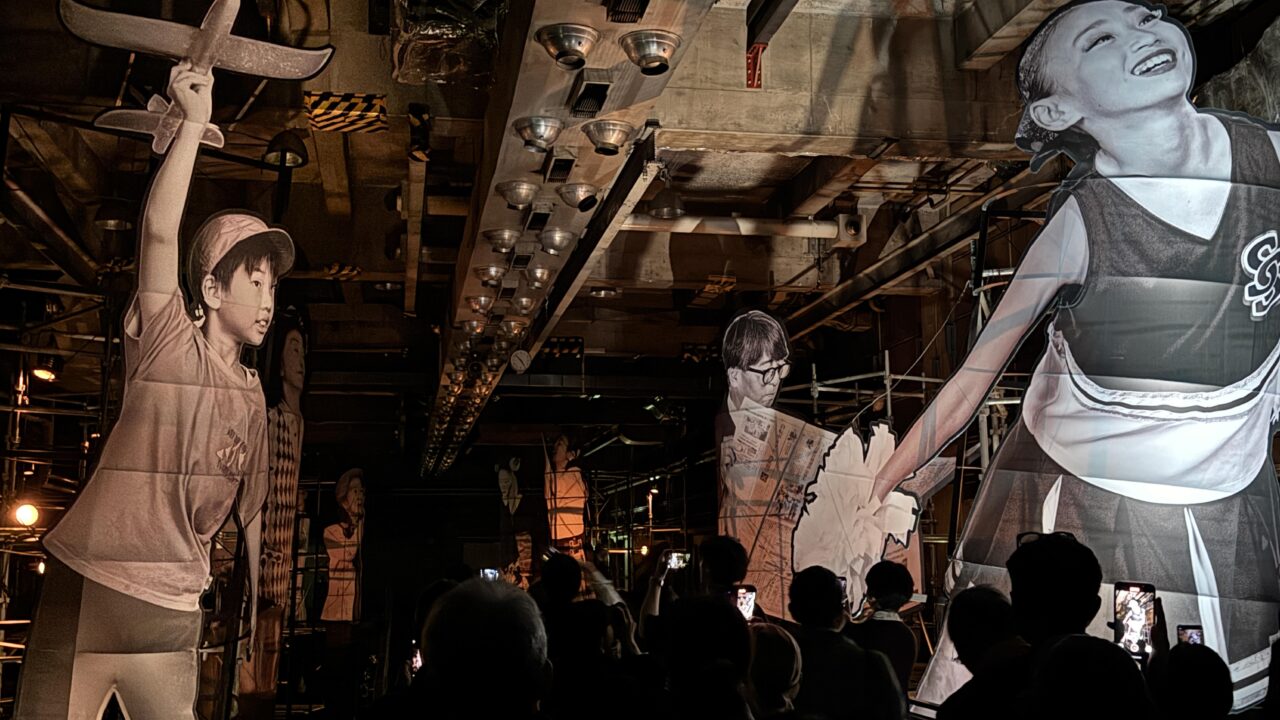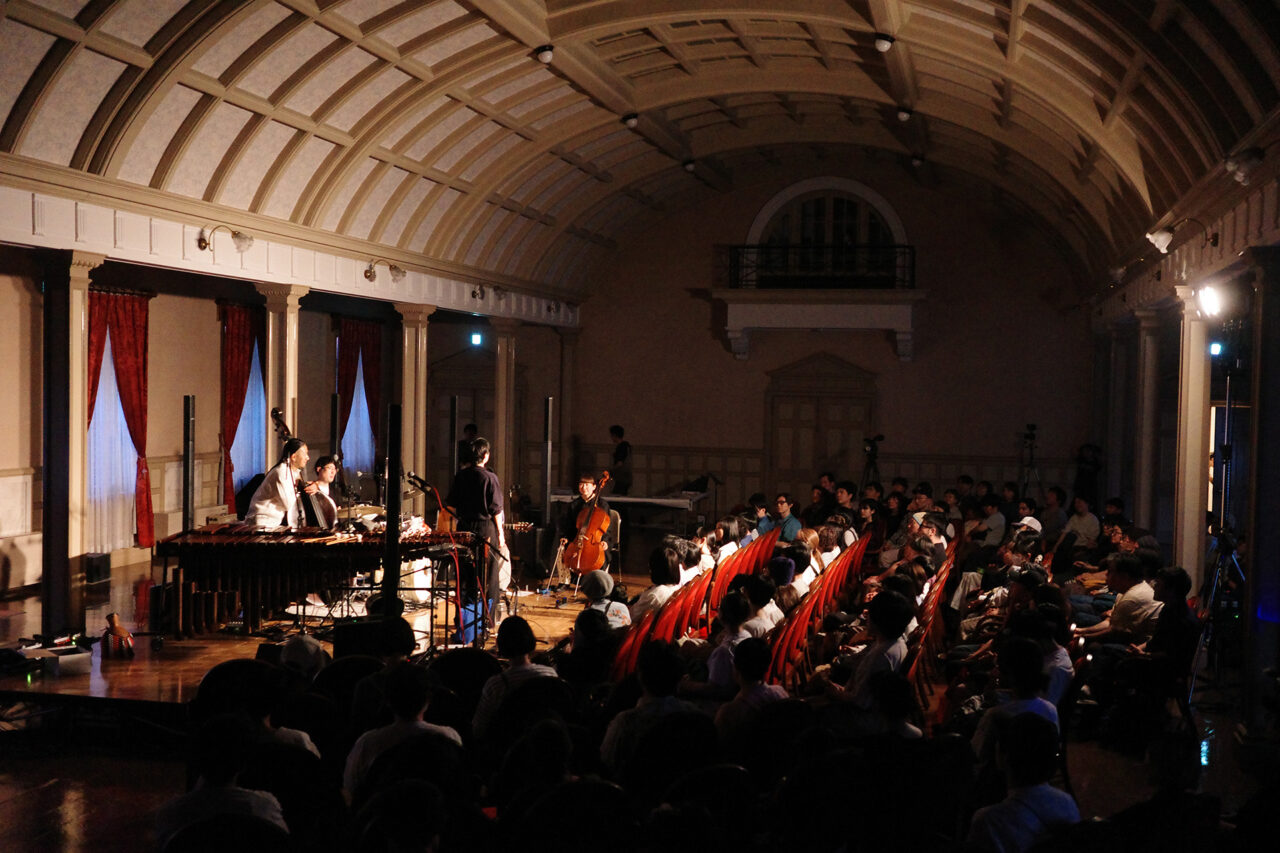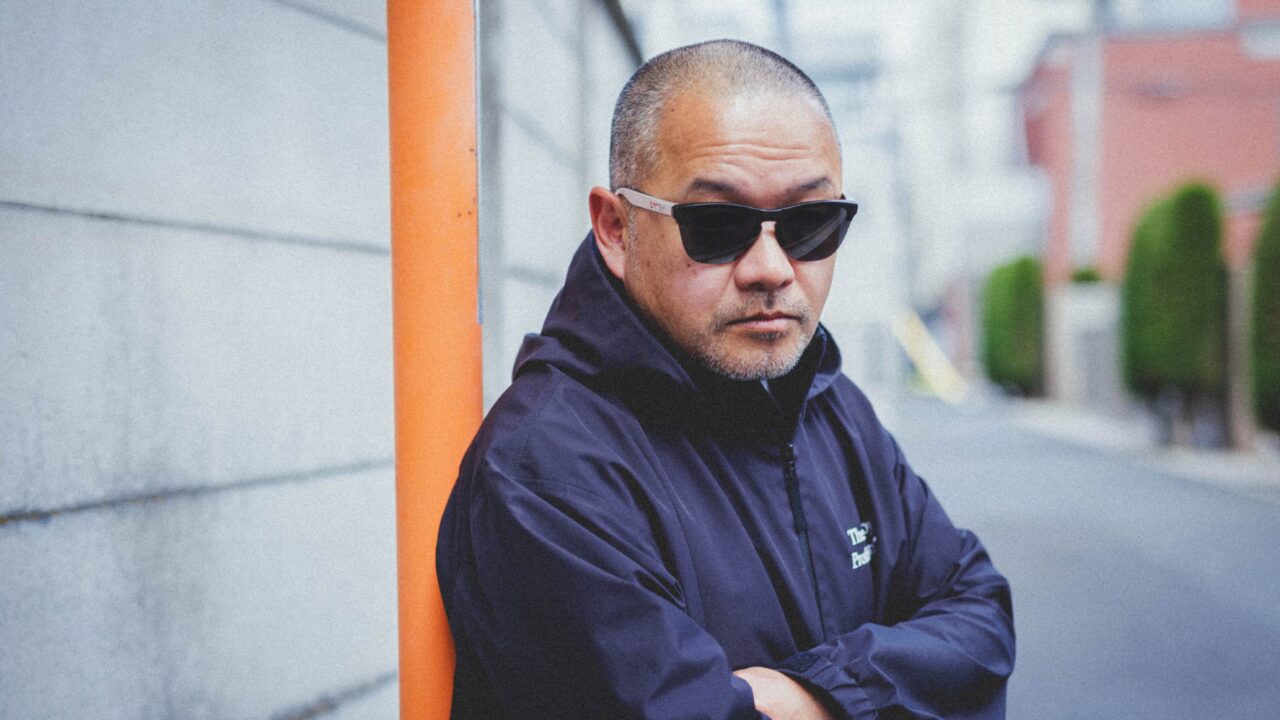Screenwriter Kankuro Kudo and musician Yoshihide Otomo have worked on two of the best serial dramas of the 2010s, “Amachan” (2013) and “Idaten: A Tale of the Tokyo Olympics” (2019). The two have teamed up for the first time in a long time for the drama series “A Town Without Seasons,” which will be available on Disney+ from August 9.
Based on a novel by Shugoro Yamamoto, which depicts human tragedies and joys, and which was also the basis for Akira Kurosawa’s “Dodes’ka-den” (1970), one of the most popular films in postwar Japan, the film is set in a temporary housing town 12 years after the catastrophe called “Nani” in the film, and depicts the lives of people trying to live tough and happy lives amid poverty and confusion.
Otomo’s accompaniment, which embodies what Kudo calls a “messy” feeling, colors the chaotic energy of the people and the city in a variety of ways. How do music and images resonate with each other in the creation of the work? What are the thoughts that go into it? In this interview, the two artists reveal the secrets of their work.
INDEX
Attracted to the uniqueness of Akira Kurosawa’s “Dodes’ka-den”
-I heard that “A Town Without Seasons” was a 30-year-long project.
Kudo: I first encountered Akira Kurosawa’s “Dodes’ka-den” when I was around 20 years old. It was clearly different from any of Kurosawa’s works, and I was most attracted to it. I went back and read the original novel by Shugoro Yamamoto, and as I repeatedly saw both the film and the novel, I began to think, “Someday I would like to remake this story in a different form. At the time, however, it wasn’t anything more than the kind of unrealistic fantasy that movie directors would often discuss at bars, saying, “If I were to remake this story, I’d like to have this person play this role.”
After “Idaten” was over, when we talked about what to do next, I suggested that if I could come up with a project of my own, this is what I would most like to do.

Kankuro Kudo joined Otona Keikaku in 1991. As a screenwriter, he won the Best Screenplay Award at the 25th Japan Academy Prize and many other screenplay awards for the movie “GO” in 2001. Since then, he has written screenplays for high-profile TV dramas such as “Amachan” and “Idaten: Tokyo Olimpic Story”.He made his feature film directorial debut in 2005 with “Yaji and Kita: The Midnight Pilgrims. He has also appeared in numerous films as an actor. His upcoming films include “Hello, Mom” (September 1) and “Yutori desuka nanika international” (October 13).
-Kudo, you are not only the writer and director for this project, but also in charge of the project.
Kudo: This is the first project to be credited as a planner.
-Not only the casting but also the staff lineup reflects your intention. Did you approach Otomo?
Kudo: Yes. When I was thinking about this story, I thought Otomo’s accompaniment would definitely be a great fit. Co-directors Satoko Yokohama and Naoki Watanabe (also assistant director) agreed with me.
Otomo:Until now, the director has worked between Kudo and myself, so I was happy to talk directly with him about the music.
Also, I love “Dodes’ka-den” so much that if asked to name my five favorite movies, it’s definitely one of them. Takemitsu’s music is probably my favorite film music. I even covered the theme song myself. So when Kudo told me about this project, I thought it’s perfect.

Born in Yokohama in 1959. Spent his teenage years in Fukushima City. He has been creating a wide variety of music from improvisation and noisy works to pop music, always in a simultaneous and independent manner, and his activities have spanned the globe. In 2013, he composed music for “Amachan” and in 2019, for the NHK historical drama “Idaten”. In response to the 2011 Great East Japan Earthquake, he launched “Project FUKUSHIMA!
-The music for “Dodes’ka-den” has a warm and gentle tone.
Otomo: Yes, it’s relatively gentle for Mr. Takemitsu. But if you listen to it carefully, it’s quite strange. I really like his work, which is strange, as in “Kaidan” (1965, directed by Masaki Kobayashi), and “Dodes’ka-den” also oozes that “strangeness. That’s what I like about it.
Kudo: I was at the recording for the opening scene in which Roku-chan runs.

-Roku-chan, the young man driving an imaginary train only he can see. Gaku Hamada played the role.
Kudo: When I saw the band playing along with the picture of Rok-chan running, I thought the same method must’ve been used for the recording of ‘Dodes’ka-den’?”
The tempo of the music was gradually increased to synchronize with the images of the train gradually getting on track and speeding up, but I thought that this could only be done by matching the sound to the actors’ performances.
Otomo: I’m not sure if it’s correct but, that scene definitely could not have been done without matching the pictures. Looking at Mr. Takemitsu’s records, it seems he composed the music for “Dodes’ka-den” later than the shooting, so I wanted to incorporate that process as well. The music made by today’s composers is the worst at that kind of improvisational matching. That’s why I decided to do something that can’t be done with hammering this time.
The setting is a town with temporary housing where people affected by “Nani” take shelter. The main character, Shinsuke Tanaka (Sousuke Ikematsu), aka Hansuke, sneaks into the town with the light-hearted idea that he will receive “up to 10,000 yen” just for reporting what he sees and hears in the town. However, Hansuke is the very man who has lost everything due to his “nani. As he observes the residents living on the edge, Hansuke becomes fascinated with them. Meanwhile, rumors begin to circulate in the town that the temporary housing complex is to be demolished.





























